Deck Railing Ideas – One of the outdoor extensions we can build is the deck. It is an extension of our living space normally positioned on the back of the home but can also be reversed. It can be a part of our yard’s recreational area and sometimes included in our landscaping area, along with a patio, pool, and outdoor kitchen. Decks are mainly used for outdoor family recreational purposes, such as enjoying sunbath, having family grilling parties, or just relaxing. We can also have some additions, such as fire pits, bar, and hot tubs, and can include various furnishings, such as couches, benches, or tables.
What is the Difference Between a Deck and a Porch?
The deck is very similar to the porch in some ways, but while they may have similar purposes, normally deck doesn’t have a roof on it.
The difference between a porch and a deck is not too obvious. Usually, a porch has a roof and is partly enclosed, while a deck is completely open. So, the installation process to construct these two is mainly similar. In addition, the porch is typically located on the front of the home as an extension to your entryway. An extension of your roof normally covers it and is accessible by the front steps. Some houses may also have a sun porch or three-season porch. A porch can be used for sitting and watching street activity, as a reception area for guests, and, in some cases, for outdoor storage.
In short, a porch needs a ceiling and possibly posts to support the overhang at the front. Decks, on the other hand, do not need these.
The Railing Plans
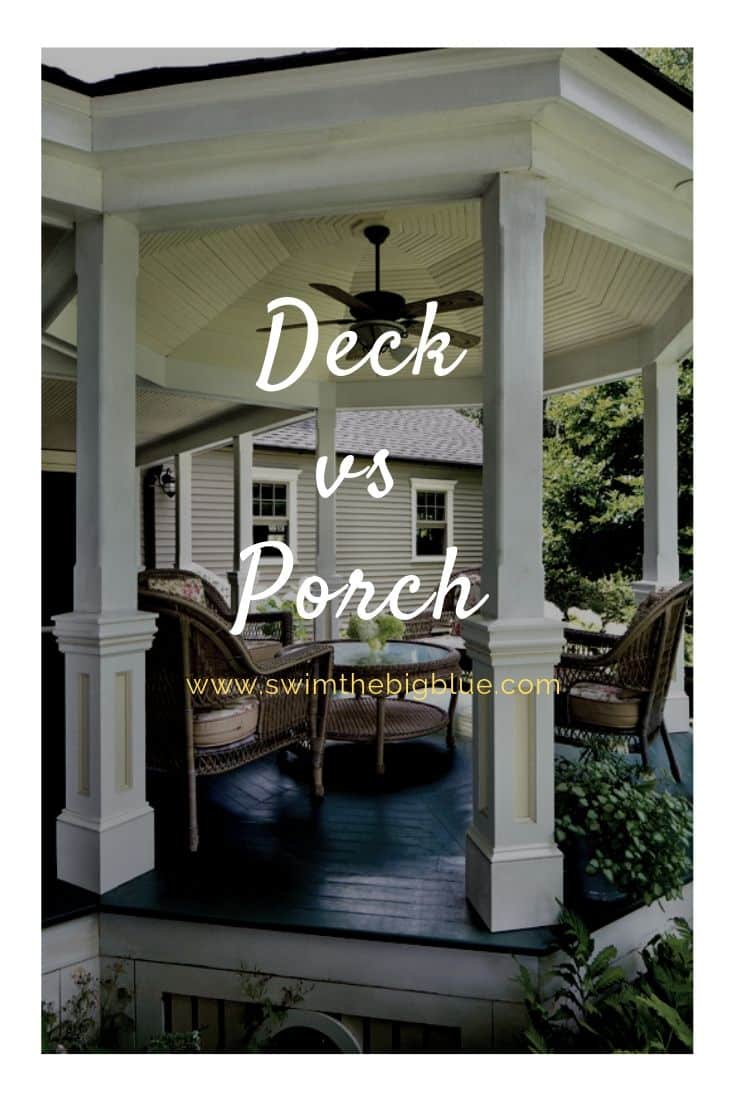
While safety issues are the top reason people choose to install a railing on their deck, keeping it in style is the best way to deal with it. Even though local codes can vary, if the deck is too high from the ground, you are required to install a railing.
The Railing Spacing
Balustrades, the vertical guards that support the handrail, must be installed close enough that the space between them is no greater than 4 inches. Most city inspectors carry a 4-inch ball with them to test the spacing. Installed Balustrades should withstand 50 lbs. of pressure exerted over a 1-square-foot area.
The structural integrity of the railing depends heavily on the posts that support the rail structure. These posts should be no farther apart than six feet on the flat deck and no farther apart than 5 1/2 feet on the stairs. Your local building department might require closer post spacing for added rail strength. Local codes might also dictate how you attach the posts to the deck, such as using certain bolts or screws. When the rail is complete, the top should withstand 200 pounds of pressure from any direction.
The Height

Install railings on any deck 30 inches from the surrounding surface and on at least one side of a stairway leading to the deck. The top of the handrail should be at least 34 inches but not more than 38 inches high. The same height rules apply to stairs, and the inspector measures the handrail height from the nose of the stair tread. The handrail should be easy to grip, with a minimum diameter of 1 1/4 inches and a maximum diameter of 2 1/4 inches. You can’t use a two-by-four, but a two-by-two as a handrail would meet the code. Some large decorative handrails are permissible as long as their design offers a finger recess that allows secure grasping.
What is the Most Inexpensive Deck Railing?
You can go for wood material when looking for cheap deck railing ideas. Wooden Railing is popular and the most inexpensive deck railing available. It is durable, easy to work with, and can be painted or stained to match your deck’s color. The cost for wood material ranges from $20-$25 per linear foot.
However, it needs regular maintenance, including staining, painting, and cleaning. Wood is also vulnerable to insect damage and might rot over time.
Cable Deck Railing Ideas
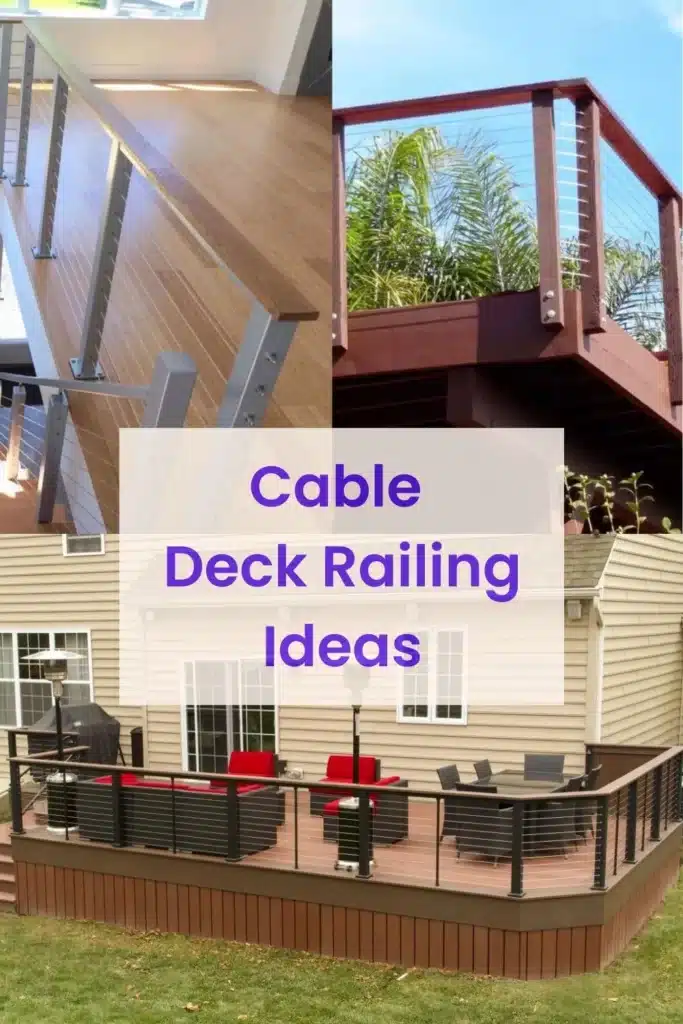
Commonly, 316-grade stainless steel is used for railing. The cable diameters are available in 3/16” and 1/4, yet the 1/8” diameter is the most frequently used. A single cable consists of nineteen thin cables which are wound together.
A cable railing is a hybrid of materials, as the cables are fitted in wood, aluminum, or composite frames. Long cables commonly run straight through intermediate posts, leading to faster installation. Speaking of style, cable deck railing comes in various horizontal and vertical cables.
Pros: clear views, modern look, easy to install, low maintenance, customizable
Cons: clearly more expensive than wood, unfriendly to children, may not meet law code in certain areas.
Composite Decking with Cable Railing Ideas
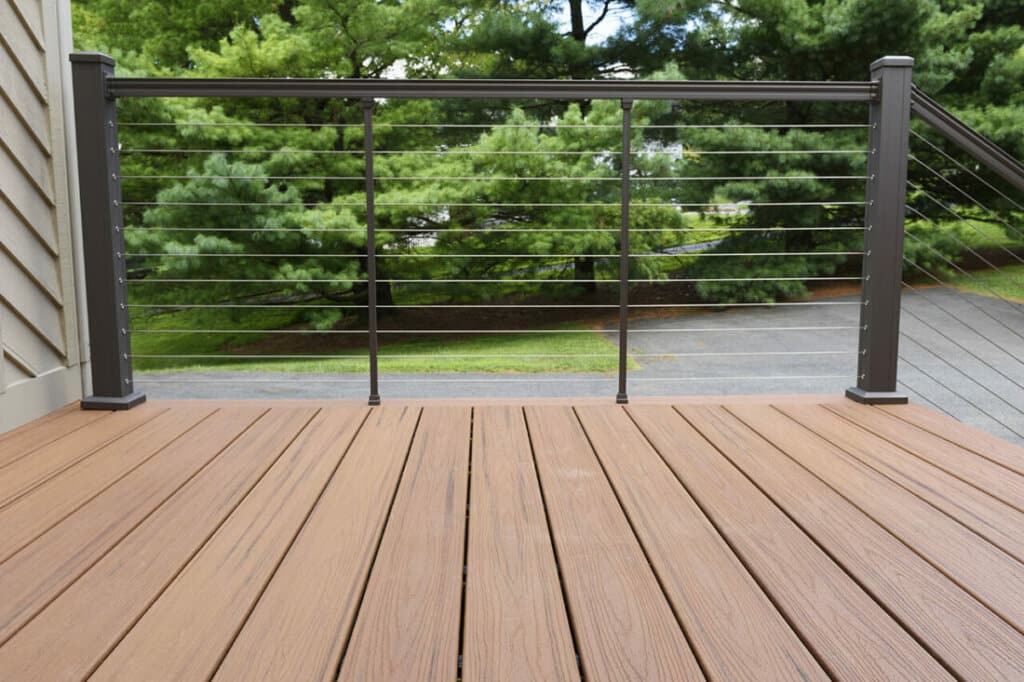
Composite decking with cable railing has become increasingly popular in home design and décor. Combining composite materials and steel cables make for a long-lasting and contemporary look that can fit into any modern or traditional home.
Wood Cable Railing

Wood cable railing provides a stunning aesthetic to any outdoor area. Combining sturdy wood posts with sleek metal cables creates a beautiful, modern look that will always be in style.
Front yard Deck Cable Railing
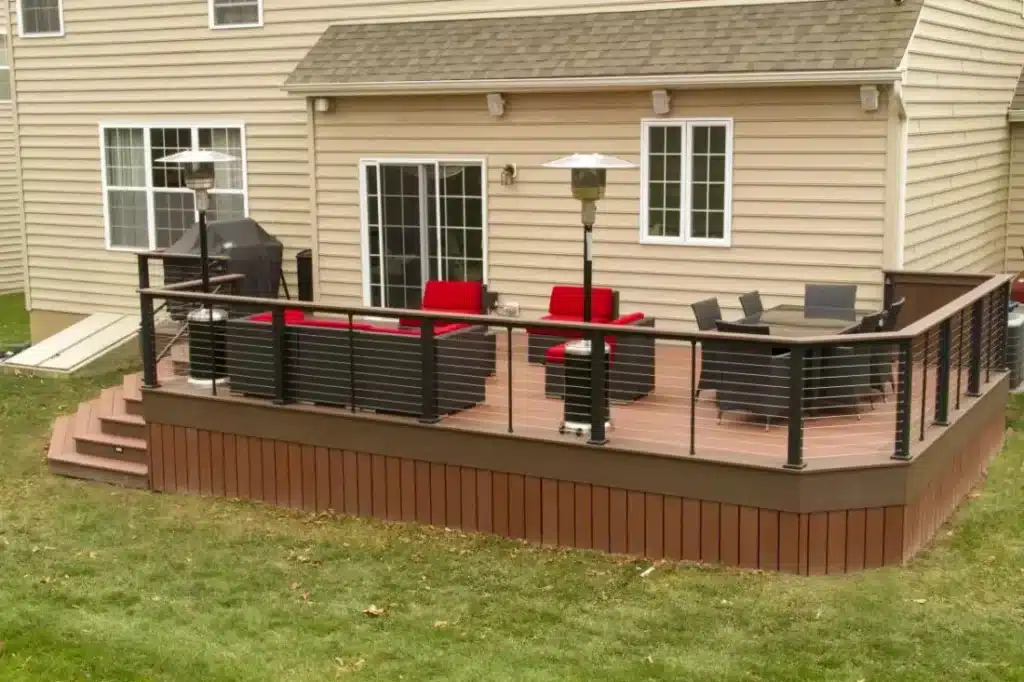
A front yard deck with cable railing is the perfect way to add a modern and stylish touch to any home. It provides an area for friends and family to gather and a place for people to relax and take in their beautiful surroundings. Combining the sleek design of steel cable rails and the natural beauty of wood decking creates an inviting atmosphere that everyone can enjoy.
Vinyl Deck Railing Ideas
Vinyl is an easy choice if you want a railing with low-cost, low-maintenance, and no-frills. Furthermore, it is lightweight and easy to install. In addition, its non-porous surface doesn’t require painting or staining, though it can resemble painted wood from a distance.
Pros: inexpensive, low maintenance, lightweight
Cons: limited color options, cheap looking, may be stiff in cold weather
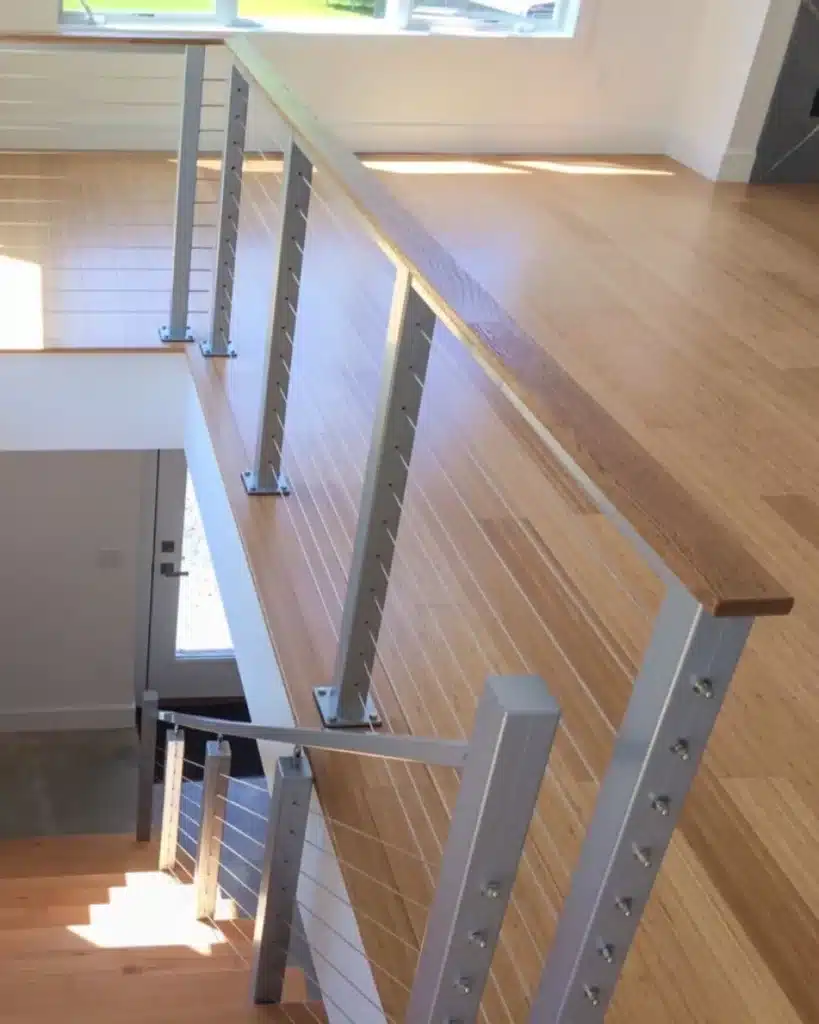
Composite Deck Railing Ideas
Composite is a wood-alternative material. It contains plastic, recycled material, and wood fibers. Simply put, it blends PVC (polyvinyl chloride) and recycled wood flour, giving incomparable beauty, strength, and weather ability. A composite railing is getting more popular over wood railing due to its low maintenance advantage.
Pros: durable, rust proof, high color retention, stains & fading resists
Cons: bulky, look heavy, looks similar to wood, moderately strong, labor-intensive install
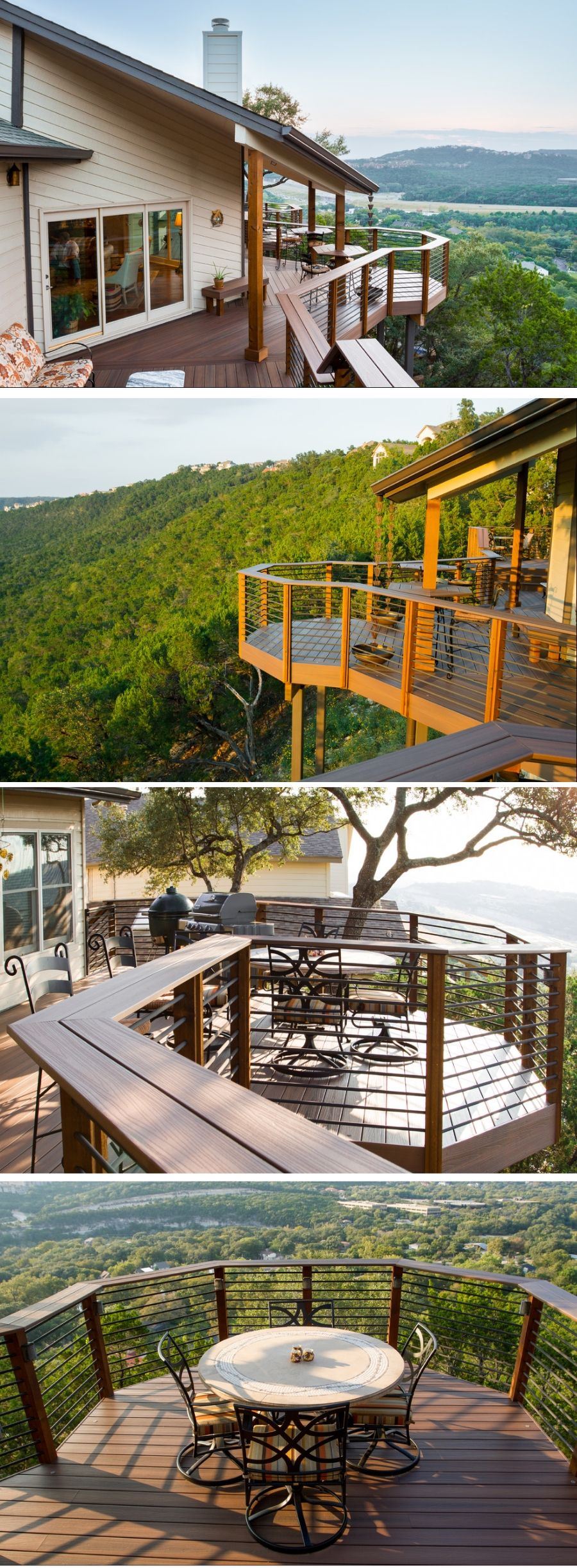
Aluminium Deck Railing Ideas
Aluminum deck railing is known over other railing materials as it is maintenance-free, durable, and extremely long-lasting. For example, the wood railing will start to deteriorate, and the iron railing is susceptible to rust (without proper maintenance) over some time. Yet, the aluminum deck railing will remain the same as the day you bought it.
Moreover, it is lightweight yet still sturdy. You can count on the aluminum deck railing to stay strong through the years. In addition, there are lots of different colors and styles of aluminum deck railing to choose from. You’re sure to catch one that fits your style, your home, and, indeed, your budget.
Pros: clean look, ease of installation, can be used between any newel posts
Cons: modern look doesn’t mesh with all architecture

Metal Deck Railing Ideas
Steel railing is a heavy-duty option that is a great option for safety. It is heavy, durable, hard, and sturdy.
Pros: strength, ease of installation, panelized versions available, adjustable stairs panels
Cons: the possibility of rust, heavy to work with
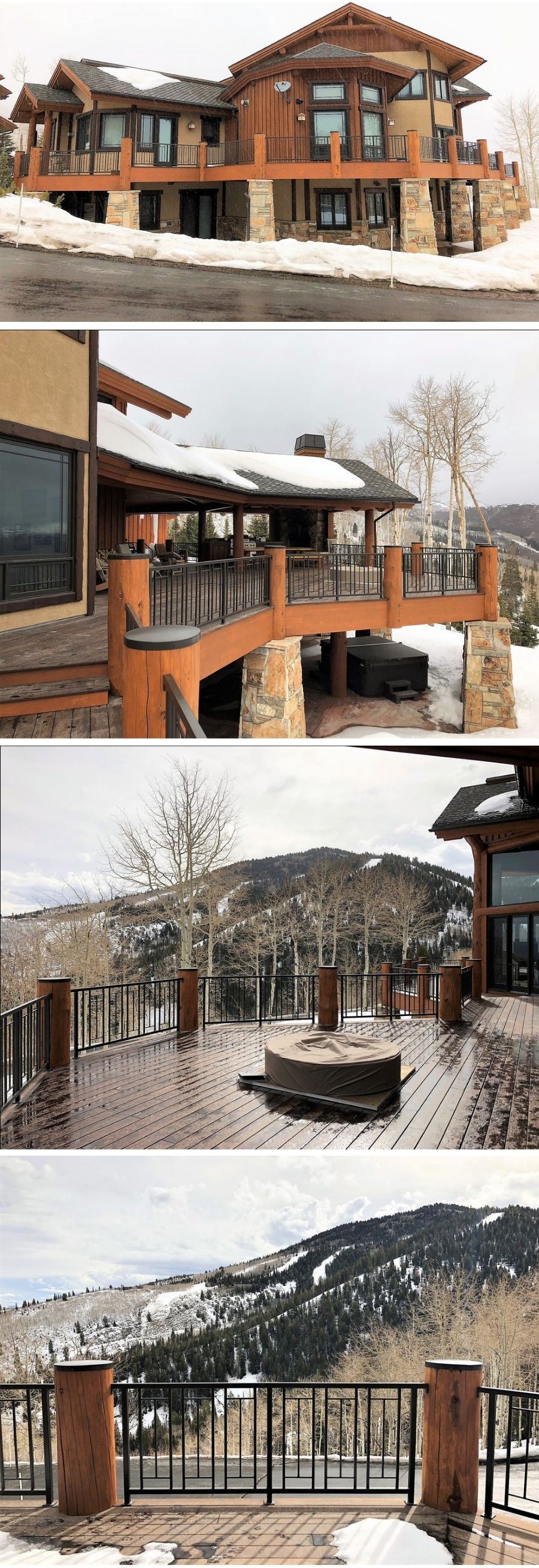
Wood Deck Railing Ideas
Traditional wood railings are still a popular choice among others, and the reasons are clear: the classic look, elegance, and economic aspect. However, it also needs lots of maintenance. Wood railings are easily damaged and require significant maintenance to stain or paint annually. Above all, wood material is still the most well-known in Deck Railing Ideas.
Pros: natural look, cheap, easily painted or stained to match the decking
Cons: high maintenance, decayed easily, warping and bowing, obstructed views
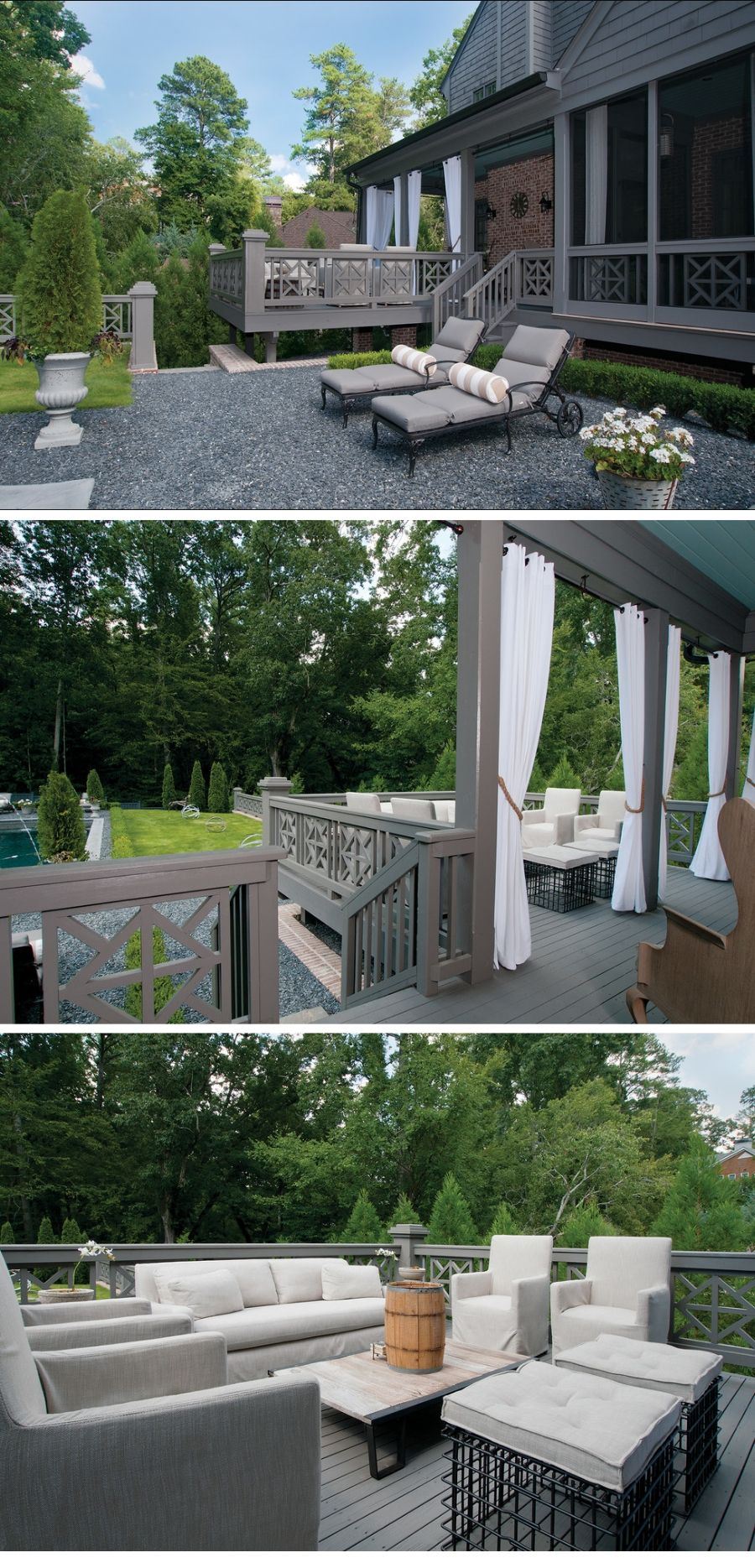
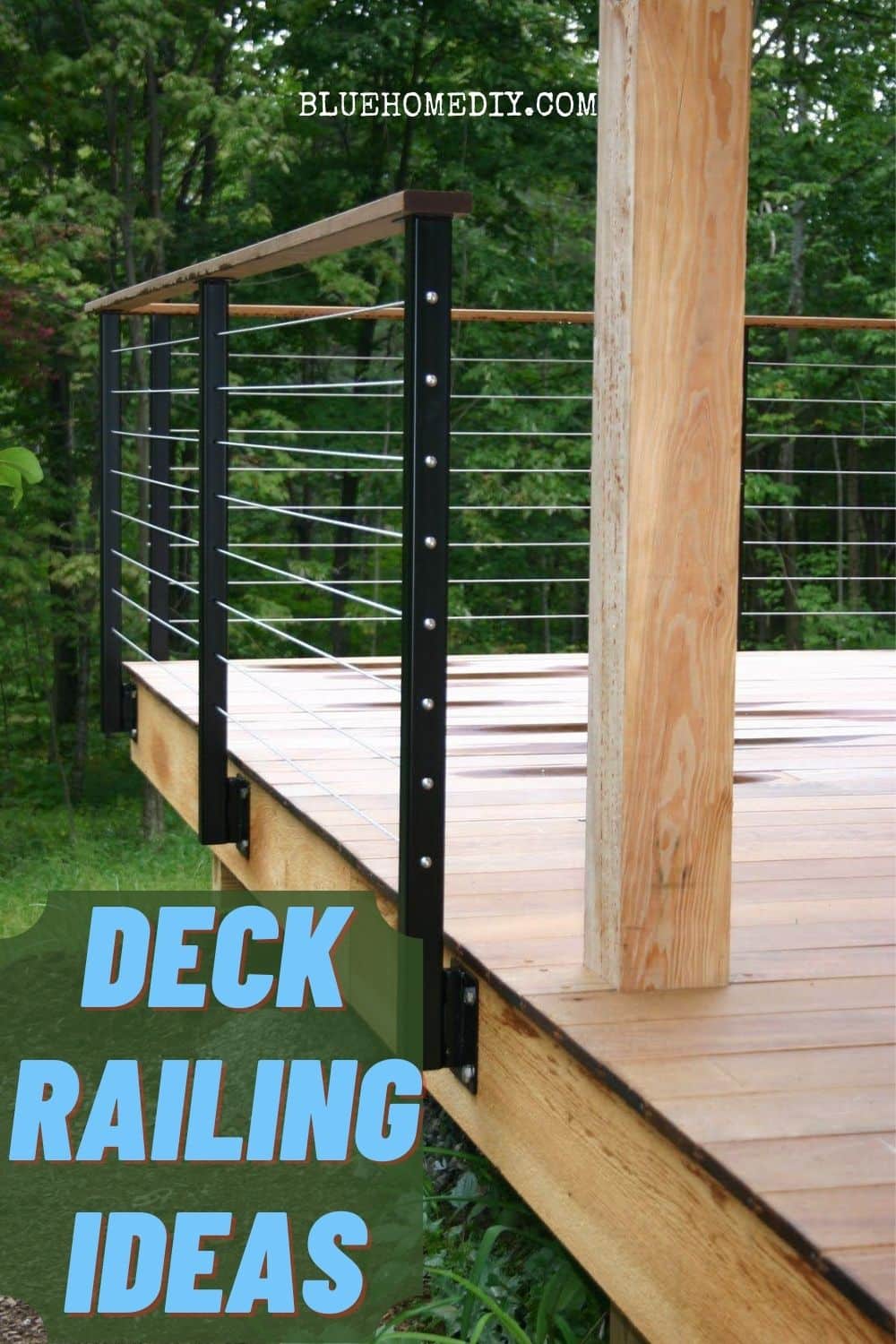


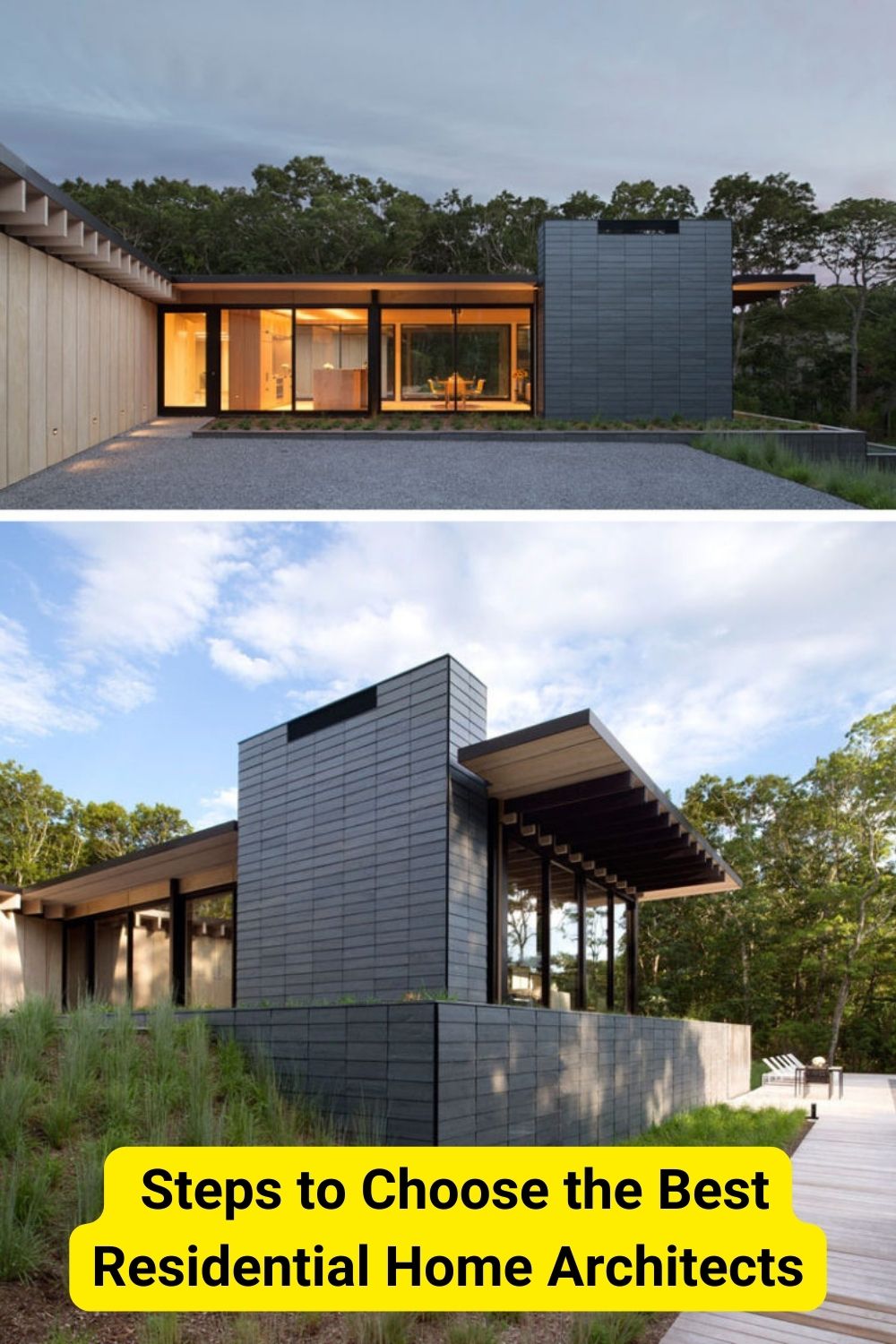
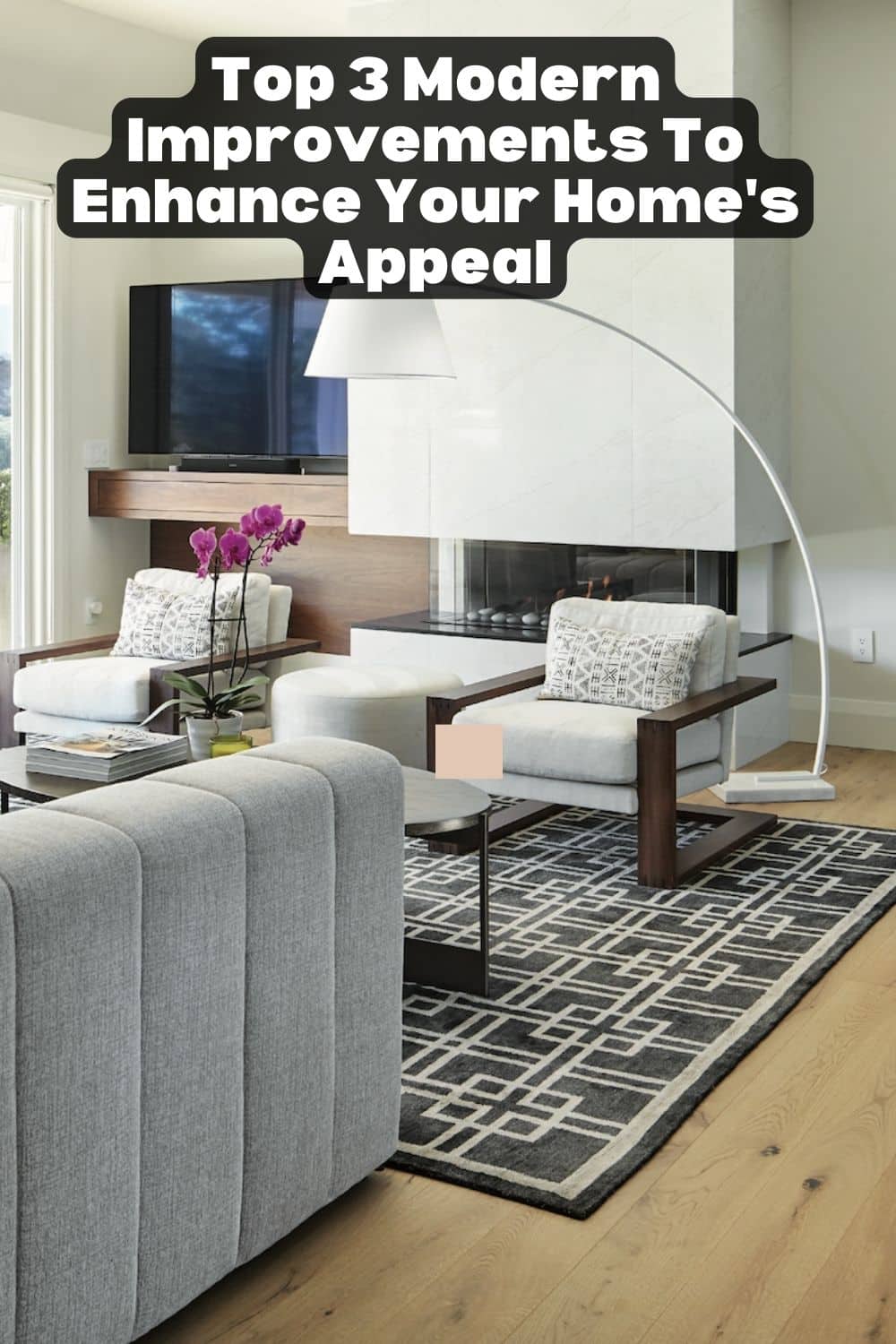
Leave a Reply